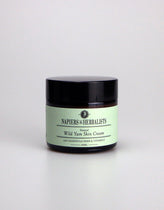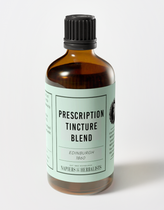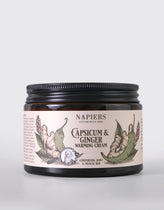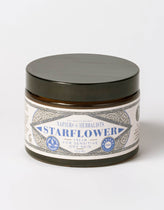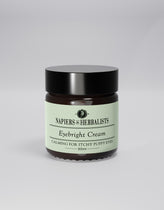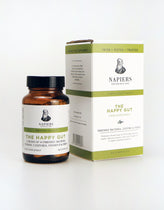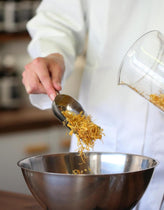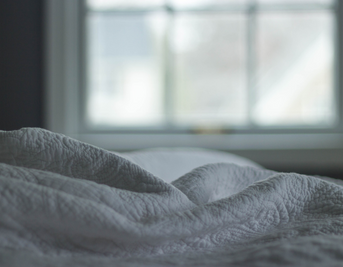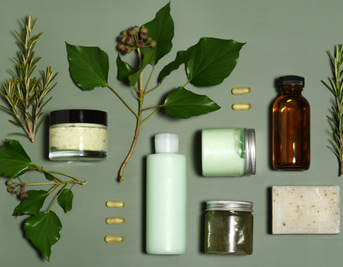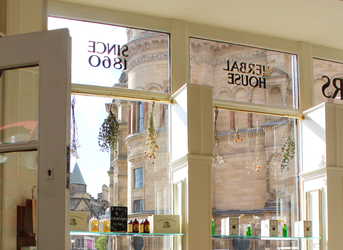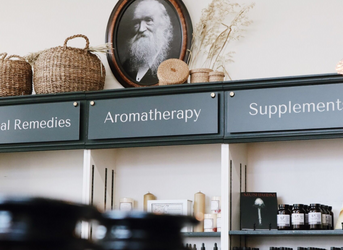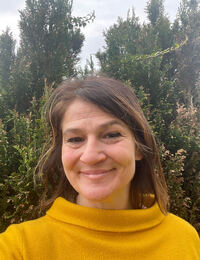Nettle Urtica dioica is a plant that needs little introduction. As children we quickly learnt to recognise them just so that we could avoid their itchy burning sting. They are part of our linguistic culture too. To nettle some one is to annoy them; to grasp the nettle - face up to an unpleasant situation; nettle rash (urticaria) - a hot itchy skin condition; to urticate - cause a stinging or prickling sensation; and we even have a special word for whipping ourselves with nettles – urtification! Nettle is fairly well-known as a highly nutritious wild vegetable. Many people have tried nettle and wild garlic soup - a foraging classic - and nettle leaf tea is widely available. However, the use of nettle seed is still fairly uncommon.
As the days lengthen, the female nettle produces inconspicuous flowers quickly followed by green seed, drooping like heavily-laden catkins from the upper third of the plant. Over the summer the seed ripens and thickens. It’s harvested when still green before it starts to dry out and turn brown. It is crunchy and full of oil high in polyunsaturated fatty acids - predominantly linoleic as well as linolenic, palmitic, oleic and stearic acids. Our bodies use linoleic and linolenic acids to make the important essential fatty acids omega 3 and omega 6.
To harvest nettle seed, I cut off the top third of each nettle and dry them on a sheet or brown paper in the sunshine, turning them occasionally until the leaves feel crisp. Then, wearing rubber gloves, I rub the seed off into a bowl. The green seed is quickly separated from any stray leaves or stems by sifting it through a standard steel mesh kitchen sieve. If you’re rubbing a lot of seed through a sieve it’s a good idea to wear a paper mask as airborne seed dust can be itchy. For nettle seed that I plan to feed to other people, I take the precaution of toasting it in a dry frying pan. The heat dissolves any stray ‘crystal hairs’ (cystoliths) and brings out their nutty taste, a little like toasted hempseed.
Nettle seed tastes delicious. It can be substituted for poppy seed in crackers, oatcakes, bread or sprinkled with chopped nuts into salads. Nettle seed will give you an energy boost and help to put you in a cheerful mood. For stimulating health benefits, take one to two spoons of fresh green or dried nettle seed a day (a standard heaped tablespoon is about 5 grams). You can chew up to 20 grams a day but many people find that just a teaspoonful is all they need. Try mixing them into yoghurt, a smoothie or add them to overnight oats. Don’t try adding them to juices though as they float and are hard to drink! I also sometimes grind them and mix them with peanut butter or honey. Spread on toast or made into protein snack bars, this is another delicious way of eating them. They also often end up being ground with seaweed, spices and salt as a seasoning.
Crush the seeds in a pestle and mortar, then infuse them in sunflower oil in a warm place for a week or two. This green oil makes a nice healthy salad oil or can be used with essential oils as an anti-inflammatory liniment for arthritic joints. In the past, horse traders would feed nettle seed to horses a few weeks before selling them. It helped the old lags become sprightly again with high spirits and shiny coats. Victor Hugo in Les Miserables confirmed that “the seed of the nettle mingled with fodder imparts a gloss to the coats of animals” and the seeds were once used to fatten up fowl.
Nettle seed is considered a Western adaptogen herb that supports the adrenal glands and endocrine system. This is why in herbal medicine it is used as a tonic for fatigue and adrenal exhaustion; for people who are burnt-out, run down and low in energy, zest for life and libido. For those interested in biochemistry, the ‘feel-good’ factor from eating raw, dried nettle seeds is caused by the neurotransmitters acetylcholine and serotonin, closely followed by choline and histamine.
Acetylcholine binds to the mood receptors in our brains. It stimulates the autonomic nervous system, improves mood and heightens sensory perception, attention span, vigilance and intuition. Acetylcholine disruption may be a primary cause of depression. Serotonin acts on the central nervous system. It regulates mood, appetite and sleep, influences memory and learning. It is serotonin, along with histamine and formic acid, in nettle spines that causes the pain when you pick them! Incidentally, acetylcholine in nettle venom may well explain why the ancient practice of urtification for pain relief actually works! Nettle seeds also raise dopamine levels, creating pleasurable feelings.
Both the roots and seeds of nettle contain a lectin called Urtica dioica agglutinin (UDA). We’re not yet sure how much the seed contains but UDA is interesting because it contains a unique pattern of T-cell and cytokine activation, known as superantigen activity. In plain-speak, this means that it supercharges the body’s natural defences and immune system without, as other studies show, raising pro-inflammatory cytokines.
Nowadays medical herbalists mainly use nettle seed to increase energy, as an anti-inflammatory and as a highly effective kidney trophorestorative. It slows down renal failure, evidenced by increased kidney glomerular function and lowered serum creatine levels. Modern clinical studies have shown that it also protects the liver, repairing it and restoring liver function after oxidative damage. Another macronutrient found in nettle seed called choline (a component of lecithin vital to liver function). Choline is sometimes used to treat liver cirrhosis and hepatitis. Studies have also shown that it is indeed anti-inflammatory and will soothe colitis (inflammation of the colon).
Nettle seed can be made into a tincture. In its most basic form a tincture is just an alcoholic extract. In the 16th century nettle seed was crushed and then soaked in wine, you can also infuse the crushed seeds in vinegar. Today, homemade tinctures can be made using 40% strength vodka at a ratio of 1 part of seed to 5 parts of vodka by volume. The seed must be crushed first and soaked in the vodka for up to 3 weeks before straining off. At this strength the usual dose is no more than 2 ml taken up to 4 times a day.
When added to herbal blends with nourishing nervines such as wild oat tops, it can be used to raise low mood - in particular winter blues or seasonal affective disorder (SAD). Try combining it with cleavers and seaweeds for slow metabolic rate as in the 19th century the powdered seeds were “considered a cure for goitre and efficacious in reducing excessive corpulency” (hypothyroidism). Culpeper (1616-1654) also claimed that “the seed being drank, is a remedy against the stinging of venomous creatures, the biting of mad dogs, the poisonous qualities of hemlock, henbane, nightshade, mandrake, or other such like herbs that stupefy or dull the senses” but I have yet to find supporting evidence of that claim. In the 18th century, Elizabeth Blackwell recommended it for “coughs, shortness of breath and obstructions of the lungs” and it had a history of use in consumption (pulmonary tuberculosis). In Europe it was used to restore libido and sexual energy, and the pressed oil burned in Egyptian lamps.
One note of caution: be careful when eating nettle seed not to exceed 30 grams a day. It can be over-stimulating and, like an amphetamine, prevent you from sleeping (although some people do experiment with nettle seed recreationally). A large 250ml cup of nettle seed tea (boiled fresh nettle seed in a 1:12 ratio (25 grams to 300 ml water) may keep you wide awake for several days!
So next time that you pass a derelict building site, jump a country ditch or take out the compost, watch out for the nettles and take a second look at this remarkable plant.
Monica Wilde
Monica Wilde MSc FLS is a forager and research herbalist. She runs foraging walks and teaches wild food and wild medicine across Scotland (www.monicawilde.com). She also works at Napiers the Herbalists (www.napiers.net) and is a Fellow of the Linnean Society. References for this article can be supplied on request.
by Monica Wilde MSc FLS
Research herbalist & forager

